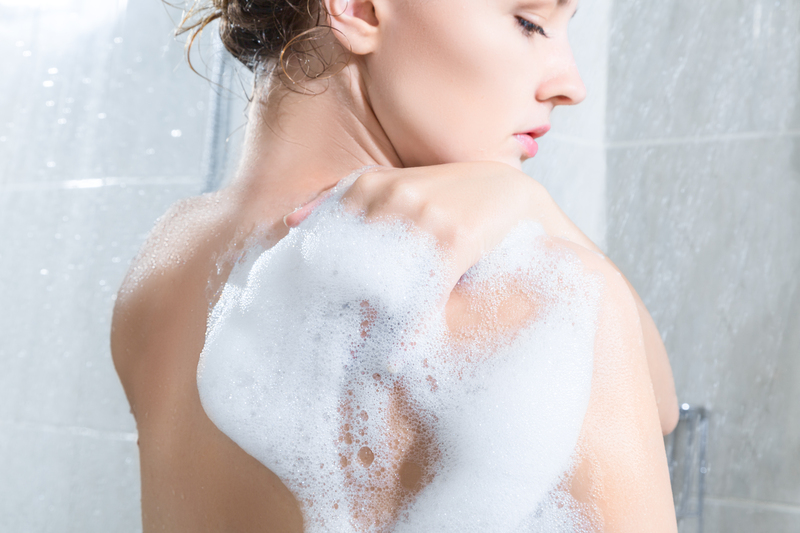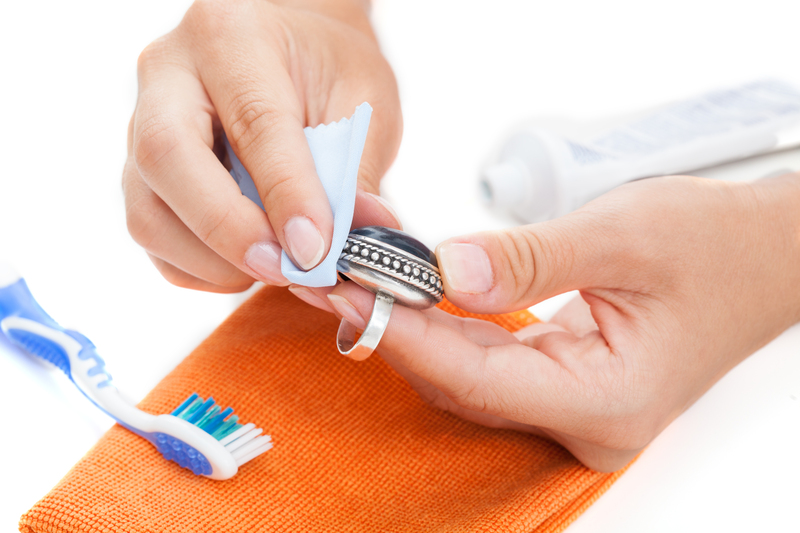Simple Ways to Wash Velvet Curtains and Retain Their Vibrant Color
Posted on 02/06/2025
Simple Ways to Wash Velvet Curtains and Retain Their Vibrant Color
Velvet curtains are synonymous with elegance, luxury, and sophistication. Their plush texture and rich appearance can elevate any room, making them a popular choice for homeowners and decorators. However, cleaning velvet curtains can be a daunting task. Improper washing can lead to faded colors, crushed piles, and irreversible damage. Are you wondering about the best ways to wash velvet drapes and keep them looking vibrant? You've come to the right place! In this comprehensive guide, we'll explore simple ways to wash velvet curtains and retain their vibrant color, ensuring your curtains remain stunning for years.
Why Velvet Curtains Require Special Care
Velvet is a unique and delicate fabric characterized by its soft, dense pile and luxurious feel. While it's resilient, velvet can be particularly sensitive to water, heat, and agitation. Improper cleaning can flatten the pile, cause color bleeding, or leave permanent marks. Therefore, it's crucial to understand the best methods and techniques for washing velvet curtains.
- Crushed pile: Rough handling can crush or flatten the velvet's signature texture.
- Color fading: Velvet dyes may bleed or fade if not treated correctly.
- Shrinkage: High temperatures and excessive moisture can cause shrinkage.

Types of Velvet Used in Curtains
Before washing your velvet curtains, identify the type of velvet fabric. Different velvets require different cleaning approaches:
- Cotton velvet: Soft and breathable but sensitive to water and easily wrinkled.
- Synthetic velvet (polyester, nylon, etc.): More durable and sometimes machine-washable.
- Silk velvet: Most delicate; typically dry-clean only.
- Crushed/panne velvet: Has a deliberately crumpled look, often more forgiving with cleaning.
Pre-Wash Preparations for Velvet Curtains
A little preparation goes a long way in preserving the vibrancy and integrity of your velvet window treatments. Here are the steps you should follow before beginning the wash:
1. Read the Care Label
Manufacturers provide valuable instructions tailored to the fabric. Look for symbols indicating if your velvet curtains are machine-washable, hand-washable, or strictly dry-clean only. Follow these instructions closely.
2. Test for Colorfastness
Not all velvet curtains are colorfast. To ensure your curtain's dye won't run, dab a damp white cloth on a hidden section. If color transfers, restrict cleaning to dry methods.
3. Remove Dust and Debris
Velvet's plush nature can attract dust, hair, and pet dander. Take these steps to remove loose particles before washing:
- Use a vacuum cleaner with a brush attachment or a handheld fabric brush.
- Gently sweep in the direction of the nap to keep the fibers smooth.
- Shake the curtains outside to release lingering dust.
Best Practices: How to Wash Velvet Curtains
There are three main methods for cleaning velvet curtains: dry cleaning, hand washing, and machine washing (if permitted). Here's how to do each while maintaining vibrant color and texture.
1. Dry Cleaning Velvet Curtains
This is the safest and most recommended way to clean velvet drapes--especially silk and cotton velvets. Professional dry cleaning prevents shrinkage, distortion, or color loss.
- Bring your curtains to a reputable dry cleaner experienced with delicate fabrics.
- For spot cleaning, use a dry cleaning solvent and test on an inconspicuous area first.
Tip: If the care label clearly states "Dry Clean Only," avoid any water-based cleaning methods.
2. Hand Washing Velvet Curtains
If your care label allows, hand washing is often gentler than machine washing and helps preserve vibrant colors. Follow these steps for effective hand washing:
- Fill a bath or large basin with cold or lukewarm water. Hot water can cause shrinkage and put stress on the color.
- Add a small amount of mild, color-safe detergent (such as a detergent made for delicates).
- Submerge the curtains gently, moving them lightly by hand. Avoid wringing or twisting the fabric.
- Soak for 10-15 minutes.
- Rinse thoroughly with cold water to remove all detergent residue.
- Squeeze gently to remove excess water--do not wring.
Important: Never hang wet velvet by its top edge, as the weight may stretch it. Instead, sandwich the curtain between two clean towels and roll it to absorb moisture.
3. Machine Washing Velvet Curtains
Some modern synthetic velvets are labeled as machine-washable. Even so, take precautions to maintain their color and texture:
- Use a front-loading washer (gentler on fabrics than top-loaders).
- Select the delicate or hand-wash cycle with cold water only.
- Wash curtains separately to avoid friction.
- Add a gentle, color-protecting detergent.
- Turn the curtains inside out before washing to protect the nap.
Warning: Never use bleach, fabric softener, or harsh detergents on velvet. These products can strip color and damage the pile.
How to Retain Vibrant Color in Washed Velvet Curtains
Retaining your velvet curtain's stunning hue means minimizing fading and preventing color bleed. Try these expert-backed tips:
- Always use cold water for washing; hot water can cause dye transfer.
- Wash curtains inside out to reduce abrasion on the outer surface.
- Use color catcher sheets during washing to trap loose dyes.
- Don't oversoak--extended exposure to water can fade even stable dyes.
- Opt for gentle, pH-neutral detergents designed for colored fabrics.
- Create a vinegar rinse for extra color retention: add 1 cup of white vinegar to your final rinse.
Natural Sunlight Can Cause Fading
After washing, avoid drying velvet curtains in direct sunlight, as UV rays break down dyes and accelerate fading. Instead, air dry them in a shaded, well-ventilated area.
Drying and Finishing Velvet Curtains Properly
Drying and finishing are as crucial as washing. Poor drying practices can result in water spots, puckering, or even permanent marks. Here's how to do it right:
1. Air Dry Flat
- Lay the curtain flat on a clean, dry towel.
- Roll up the towel to gently press out more water.
- Unroll and lay the curtain flat on a fresh dry towel or on a drying rack.
- Never hang by the rod pocket or top hem until almost completely dry; heavy wet velvet will stretch or distort.
2. Proper Hanging for Final Dry
Once the curtains are nearly dry but still slightly damp, hang them by the rod. This helps:
- Smooth out any creases or wrinkles.
- Restore the curtain's natural drape.
Allow the remaining moisture to evaporate naturally in a well-ventilated, shaded space.
3. Steaming, Not Ironing
If your velvet curtains have wrinkles, use a handheld steamer to gently loosen them. Hold the steamer a few inches from the fabric--never press directly against the nap. Avoid ironing; heat will crush the pile.
Pro Tip: For tough creases, hang the curtains in the bathroom while you take a hot shower. The steam will relax the fabric safely.
Spot Cleaning Velvet Curtains
For minor stains or spills, spot cleaning is often the best solution and helps retain the curtain's color and texture.
- Mix a small amount of mild detergent with cold water.
- Dab (don't rub) the stain with a soft, clean cloth.
- Blot with a second damp cloth to rinse, then press dry with a towel.
Avoid soaking the area and always work in the direction of the velvet's nap.
Regular Maintenance for Velvet Curtains
Preserving the vibrancy of velvet curtains doesn't stop at periodic washes. Maintenance between washes ensures longevity and radiant color:
- Weekly Dusting: Use a vacuum cleaner with a brush attachment or a soft lint roller.
- Limit sun exposure: Use lining or sheer panels behind your velvet drapes to shield them from UV rays.
- Keep windows closed on windy days to reduce dust build-up.
- Rotate curtains (if possible) to ensure even wear and exposure to light.
Common Mistakes to Avoid When Washing Velvet Curtains
Avoid these pitfalls to prevent accidental damage or dullness:
- Never use bleach or strong chemicals--they destroy both color and texture.
- Avoid overloading the washing machine--it increases abrasion.
- Don't wring or twist velvet curtains, as this can crush the pile or cause stretching.
- Don't iron directly--high heat ruins velvet's luxurious nap.
- Don't soak for too long--prolonged exposure to water can ruin colors and fabric stability.

FAQ: Washing and Caring for Velvet Curtains
-
Can I put velvet curtains in the dryer?
No. Tumble dryers risk shrinking, damaging the pile, and causing uneven drying. Always air dry velvet curtains. -
How often should velvet curtains be washed?
Wash only when necessary--typically every 12-18 months or when noticeably dirty. -
What if my velvet curtains are water-stained?
Lightly steam the area and gently brush with a soft, dry brush to lift the nap. -
What are the signs velvet drapes need professional cleaning?
Stubborn stains, major soiling, or curtains labeled "dry clean only" should all be professionally cleaned.
Final Thoughts: Enjoy Your Radiant, Luxurious Velvet Curtains
Washing velvet curtains while maintaining their vibrant color demands gentle care, attention to detail, and the right cleaning methods. By following these simple steps for washing velvet curtains, you can enjoy their rich beauty while protecting their delicate fibers and deep hues. Remember: always check care labels, use the gentlest cleaning method available, and take steps to protect against fading.
Investing time in the proper cleaning and maintenance of your velvet curtains ensures they remain the centerpiece of your room--bold, elegant, and vibrantly colored for many years to come.
Have additional tips or questions about velvet curtain care? Share your experiences in the comments below!




